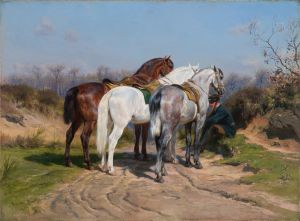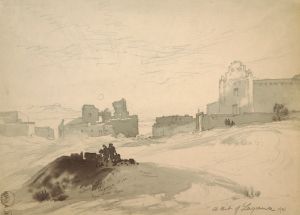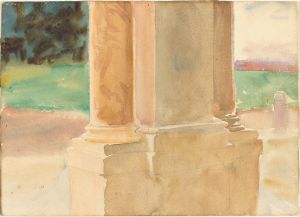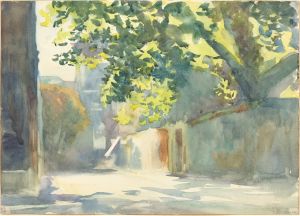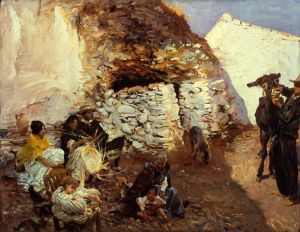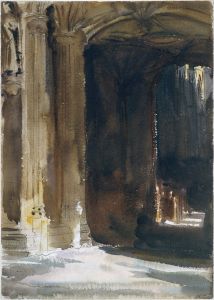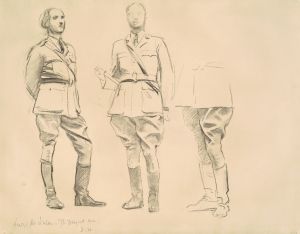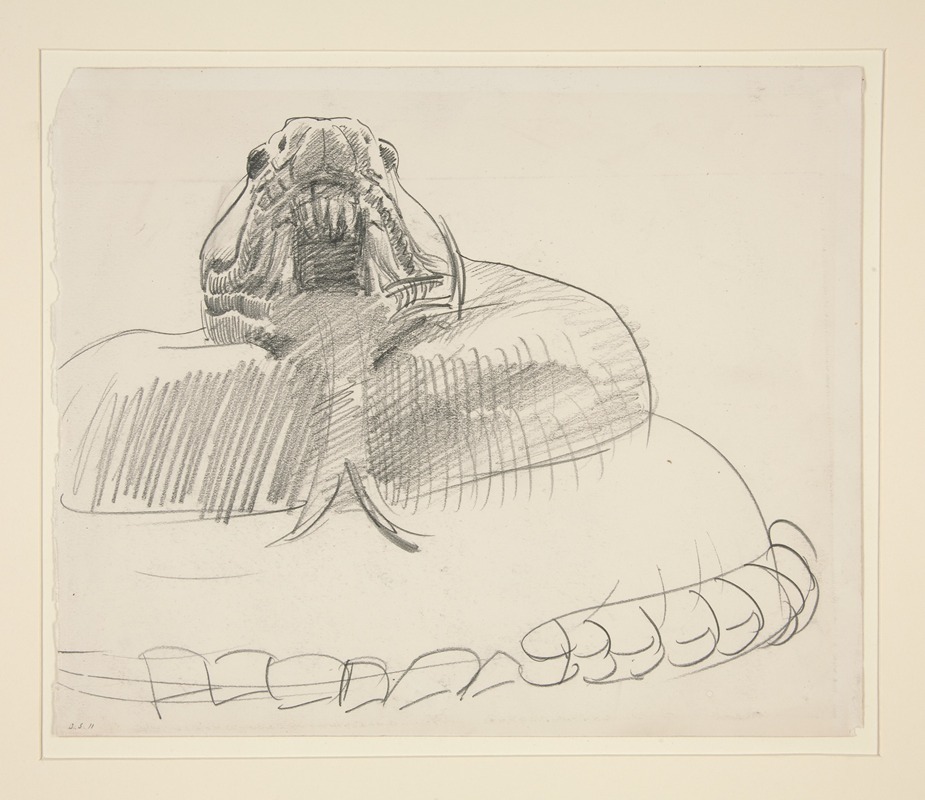
Rattlesnake
A hand-painted replica of John Singer Sargent’s masterpiece Rattlesnake, meticulously crafted by professional artists to capture the true essence of the original. Each piece is created with museum-quality canvas and rare mineral pigments, carefully painted by experienced artists with delicate brushstrokes and rich, layered colors to perfectly recreate the texture of the original artwork. Unlike machine-printed reproductions, this hand-painted version brings the painting to life, infused with the artist’s emotions and skill in every stroke. Whether for personal collection or home decoration, it instantly elevates the artistic atmosphere of any space.
John Singer Sargent, an American expatriate artist known for his evocative portraits and landscapes, painted "Rattlesnake" in 1917. This work is one of Sargent's lesser-known pieces and reflects his versatility and interest in a variety of subjects beyond his acclaimed portraiture. Sargent was born in Florence, Italy, in 1856 to American parents and spent much of his life in Europe. He became one of the leading portrait painters of his generation, celebrated for his ability to capture the character and personality of his subjects with a remarkable sense of realism and vitality.
"Rattlesnake" is an oil painting that depicts a scene involving a rattlesnake, though specific details about the composition and the context of the painting are not widely documented. During the time Sargent painted "Rattlesnake," he was exploring different themes and subjects, often inspired by his travels and the natural world. This period of his career was marked by a shift from formal portrait commissions to more personal and experimental works, including landscapes, murals, and genre scenes.
Sargent's technique in "Rattlesnake," as in many of his works, likely showcases his masterful use of light and shadow, as well as his fluid brushwork. These elements are characteristic of Sargent's style, which combines elements of Impressionism with a more traditional approach to composition and form. His ability to render textures and details with precision would have been particularly effective in capturing the intricate patterns and scales of a rattlesnake.
The painting may have been influenced by Sargent's interest in the American West, a region he visited during his travels in the United States. The American West, with its unique landscapes and wildlife, provided a rich source of inspiration for many artists of the time. Sargent's exploration of this theme aligns with his broader interest in capturing diverse subjects and environments.
While "Rattlesnake" is not as widely recognized as some of Sargent's other works, it contributes to the understanding of his artistic range and interests. Sargent's legacy as an artist is defined by his ability to transcend the conventions of portraiture and explore a wide array of subjects with equal skill and sensitivity. His works continue to be celebrated for their technical excellence and their ability to convey the essence of the people and places he depicted.
In summary, "Rattlesnake" by John Singer Sargent is a testament to the artist's diverse interests and his mastery of painting techniques. Although specific details about the painting are limited, it remains a part of Sargent's extensive body of work that showcases his talent and versatility as one of the preeminent artists of his time.






